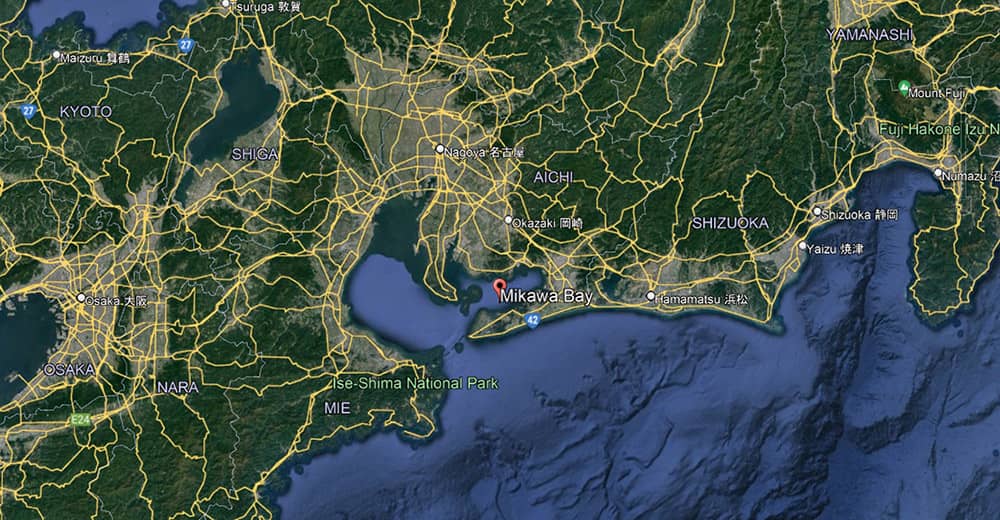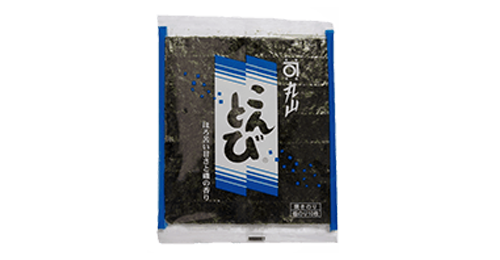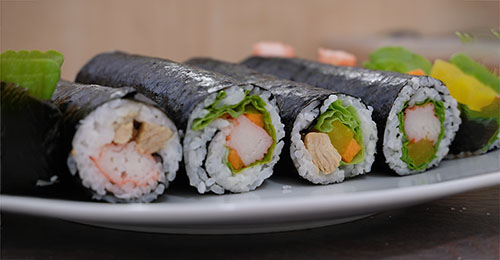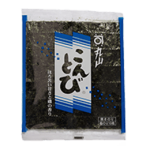Kontobi seaweed has a unique tasted due to the commination of black, green and blue algae. It has a real tasted and deep wildness of the sea. Bitter, sweet, salty and umami aromas and flavors are scattered as you taste this rare product.
The right selection of sake and tea service equipment not only brings a theatrical touch to the dining experience, but also unveils the true nature of the iconic Japanese beverages depicting a keenness for excellence.
KONTOBI ARTISAN SEAWEED
| Origin: | ARIAKE SEA, SAGA, JAPAN |
| Unit Size: | 5 sheets |
Maruyama Kontobi nori is a real artisan product and chosen by both Michelin-starred sushi restaurants and foodies. It is a black seaweed with dots of blue-green algae mixed in. It is harvested in December, and has long been called Kontobi, which means a flying mix and reflect the dynamic taste profile of the seaweed. Because it is a natural product, it is highly rare, and its aroma and flavor differ depending on how it is mixed. During the roasting process, the blue-green part of the seaweed cooks quickly, and its bitter-sweet taste and the aroma of the seawater enhance the flavor of the nori.

Kontobi Blue is coming from Mikawa Bay of Ariake Sea. The Ariake Sea is an elongated bag-shaped bay, covering approx. 1,738 km2, with a vast tideland that has developed in the shallow waters. Many rivers including the Chikugo River flow into it, bringing the rich nutrient salts (such as nitrogen and phosphorus) that are necessary for nori to grow. Moreover, since there is a difference of up to 6 meters between high and low tide, the tidal current is fast, which enables the seaweed to absorb nutrient salts more easily. These unique conditions in the Ariake Sea make this area particularly suitable for aquaculture. The melt-in-the-mouth quality of nori from the Ariake Sea means that it releases amino acids quickly when put on the tongue, and that's what makes it taste so immediately delicious. 'Pole-system aquaculture' is used in the shallow waters of the Ariake Sea, which involves stretching nets between poles planted in the seabed. This method leaves the nets exposed above water at low tide, when we say they are 'dried out,' and that's believed to be connected to the good mouthfeel of the nori. After rearing in the open sea for 40 or 50 days, the first harvesting phase begins. Harvesting can last up to 5 months with harvesting intervals every 10-15 days and 10-12 harvests annually. However, it is the first net harvested seaweed that is the most highly regarded due to its elegant flavors, balance and texture. It is as well a real nutritional powerhouse with high concentration of minerals, v iodine, calcium, iron, phosphorus, potassium, manganese, porphyrin, copper, zinc and vitamins A, B complex, C, E and K, niacin, folic acid and B12.
- TASTE PROFILE
- CULINARY USE
- STORAGE
Maruyama Kontobi adds kick and savory goodness to any dish it touches. From nori rolls and salads toppings, to ramen, nabe (hotpot), stocks and nori-crusted steaks.
Add it to your sandwich or wrap, shred on a scrambled eggs, top a bowl of soup for extra boost of flavors and nutrients.
Keep in dry cool place in airtight container away from direct light.




